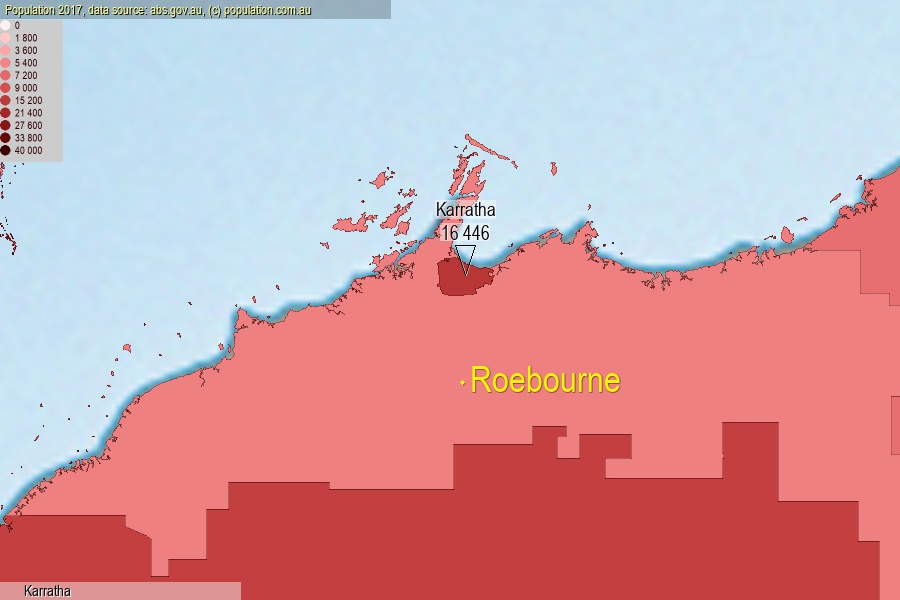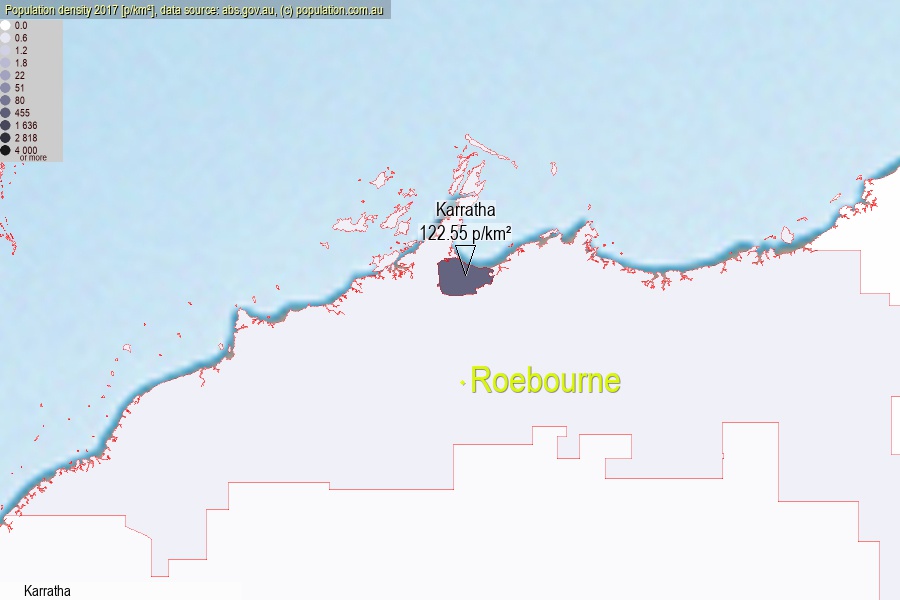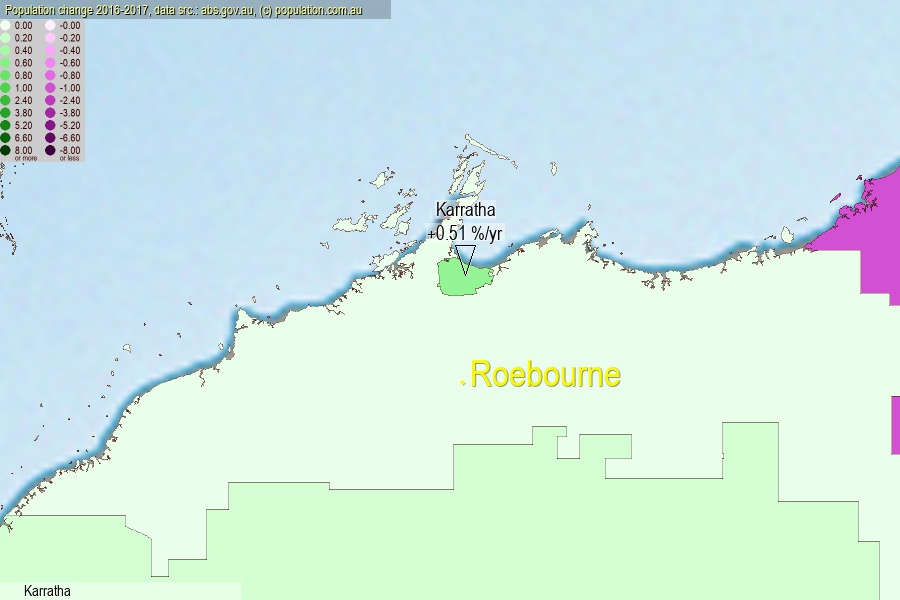 population.com.au
population.com.auLast official estimated population of Karratha (as Statistical Area Level 2) was 16 446 people (on 2017-06-30)[2]. This was 0.07% of total Australian population and 0.635% of WA population. Area of Karratha is 134.20 km², in this year population density was 122.55 p/km² . If population growth rate would be same as in period 2016-2017 (+0.51%/yr), Karratha population in 2025 would be 17 125. [0]



Click to enlarge. Karratha is located in the center of the images.
Population [people], population density [p./km²] and population change [%/year] [2]
View borders » (new window) [4]
[2001-2002] +6.35 %/Yr.
[2002-2003] +7.04 %/Yr.
[2003-2004] +6.01 %/Yr.
[2004-2005] +5.92 %/Yr.
[2005-2006] +6.99 %/Yr.
[2006-2007] +2.44 %/Yr.
[2007-2008] +3.01 %/Yr.
[2008-2009] +3.35 %/Yr.
[2009-2010] +3.28 %/Yr.
[2010-2011] +4.56 %/Yr.
[2011-2012] +2.70 %/Yr.
[2012-2013] +2.64 %/Yr.
[2013-2014] -1.28 %/Yr.
[2014-2015] -3.53 %/Yr.
[2015-2016] -4.16 %/Yr.
[2016-2017] +0.51 %/Yr.
[0] Calculated with linear interpolation from officially estimated population
[1] Read more about SA2 and Australian Statistical Geography Standard (ASGS) on abs.gov.au
[2] Population data from Australian Bureau of Statistics (Population and density: 2017; change: 2016-2017)
[3] Digital Boundaries: Australian Statistical Geography Standard (ASGS) 2016.
[4] Border coordinates are simplifyed using Ramer-Douglas-Peucker algorithm.